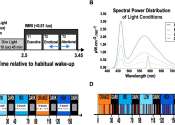New UV air disinfection technology could help protect against health care infections, possibly the next pandemic
Experts are working on a new type of ultraviolet light called far-UVC that could be highly effective for reducing airborne transmission of diseases such as COVID-19 and influenza--as well as surface contamination in hospitals--with ...
Apr 24, 2024
0
0









